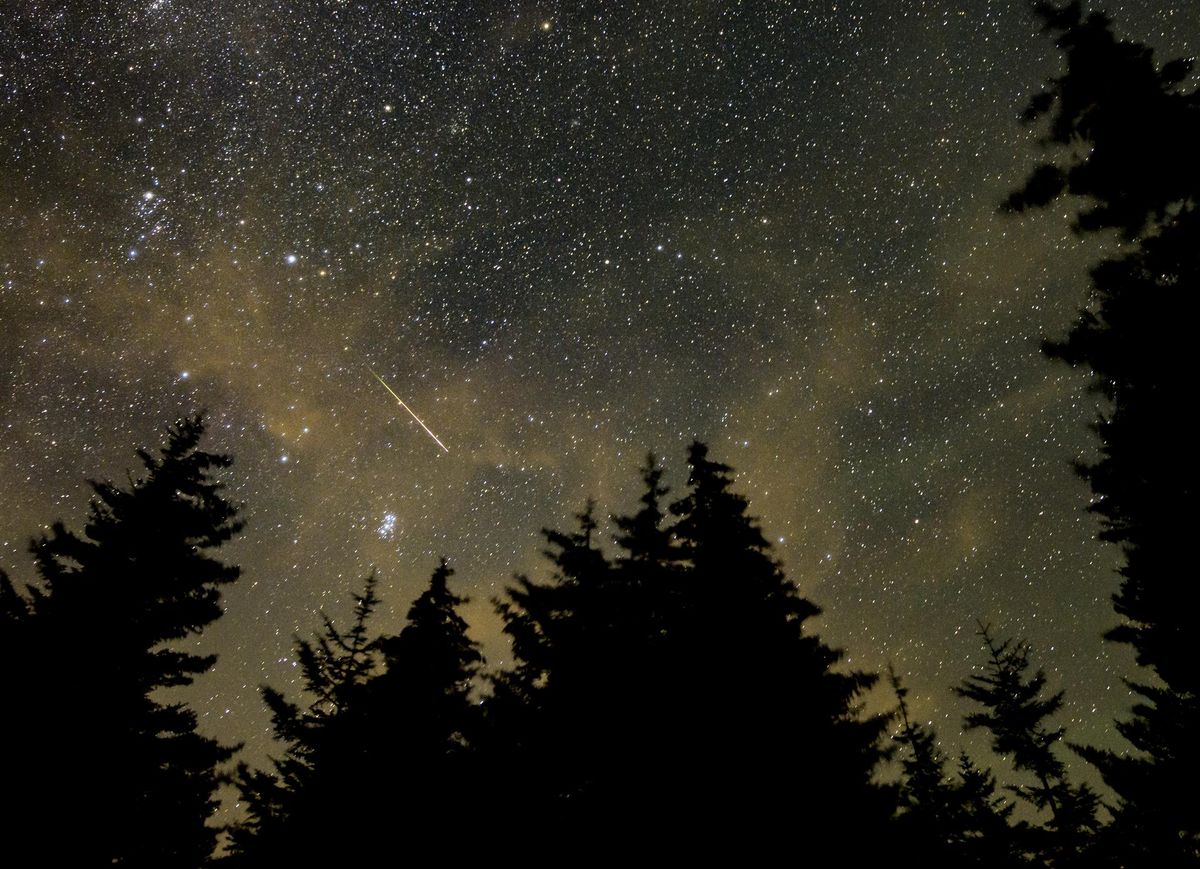Watching a meteor shower is one of the most awe-inspiring ways to engage with the night sky. Meteor showers, or “shooting stars,” happen when Earth’s orbital path intercepts debris left by a comet or asteroid.
If you missed the meteor showers earlier this year, don’t worry — there are plenty of opportunities to see several other major ones before year’s end. In fact, the best meteor showers are yet to come.
All meteor showers are best viewed with the naked eye; because individual meteoroids move so fast, it’s not practical to try and spot them with stargazing binoculars or a backyard telescope. (Still, those tools are handy for enjoying other skywatching sights this year, including planets, comets and a spree of upcoming supermoons). The darker the sky where you are, the more meteors you are likely to see — so consider travelling if you want the best view. Here’s everything you need to know to catch the most spectacular meteor showers of the year.
Southern Delta Aquariids
Although the Delta Aquariid meteor shower lasts from July 18 to Aug. 21, the best time to watch will be the night of July 29-30. The moon will be a waning crescent (23% full) and will rise around 1 a.m. EDT on the 30th, so the moonlight won’t interfere too much with the meteor shower. Expect to see 15 to 20 meteors per hour.
Meteor showers are named after the constellation from which they appear to originate. To see the Delta Aquariids, look for the star Skat (also known as Delta Aquarii) in the constellation Aquarius, which will be highest in the sky around 2 a.m. (regardless of your time zone).
The Perseids
You do not want to miss out on the Perseid meteor shower; it is one of the most spectacular meteor showers of the year.
The Perseids run from July 14 to Sept. 1, peaking on the night of Aug. 11-12 with about 100 meteors per hour. Although the moon will be a waxing crescent (41% full), it will set before midnight EDT — so the moonlight will not be a problem. The Perseids’ radiant is the constellation Perseus, which will reach its zenith (or highest point) around dawn; however, it’s not necessary to find the radiant to see the Perseids. They will be visible throughout the entire sky.
The Orionids
The Orionids will appear from Sept. 26 to Nov. 22 and are expected to peak on the night of Oct. 20-21 with 10 to 20 meteors per hour. However, this year’s display will be hindered by the waning gibbous moon, which will be 85% full. The moon will rise around 8 p.m. EDT on the 20th and remain visible throughout the night. The Orionids radiate from the constellation Orion, which will reach its zenith around 2 a.m.
The Leonids
The Leonids will appear from Nov. 3 to Dec. 2 and will peak on the night of Nov. 17-18 with 10 to 15 meteors per hour. However, the moonlight will likely wash out any meteors; the moon will be a waning gibbous (95% full), rising around 6 p.m. EST and remaining visible throughout the night. The Leonids radiate from the constellation Leo, which will rise around midnight but doesn’t reach its highest point until dawn.
The Geminids
The Geminids will occur between Nov. 19 and Dec. 24, peaking on the night of Dec. 13 with 120 meteors per hour. The moon will be a waning gibbous (96% full) and will rise around 3 p.m. EST on Dec. 13 and set around 7 a.m. Although the moonlight will blot out some meteors, the Geminids are fairly bright — so it might still be worth watching them despite the almost-full moon. The Geminids radiate from the constellation Gemini, which will reach its highest point around 2 a.m.
The Ursids
The Ursids will last from Dec. 13 to 24 and will peak in the early morning of Dec. 22. The Ursids yield about five to 10 meteors per hour. However, the moonlight might wash out some; there will be a waning gibbous moon (62% full) during the shower’s peak, rising just before midnight EST. The Ursids radiate from the constellation Ursa Minor, also known as the Little Dipper. The Little Dipper is visible at all times in the night sky in the Northern Hemisphere.
The Quadrantids
Seeing the Quadrantids is an otherworldly experience, as it is one of the strongest meteor showers of the year.
The Quadrantids will last from Dec. 26 to Jan. 16, 2025, peaking on the morning of Jan. 3, 2025, with 120 meteors per hour. The moon will be a waxing crescent (9% full) and will set around 8 p.m. EST on Jan. 2, making this the perfect opportunity to view the night sky. The radiant for the Quadrantids is located near the Big Dipper, which rises after midnight and reaches its zenith before dawn.















%20(2)%20(1).jpg)



Discussion about this post